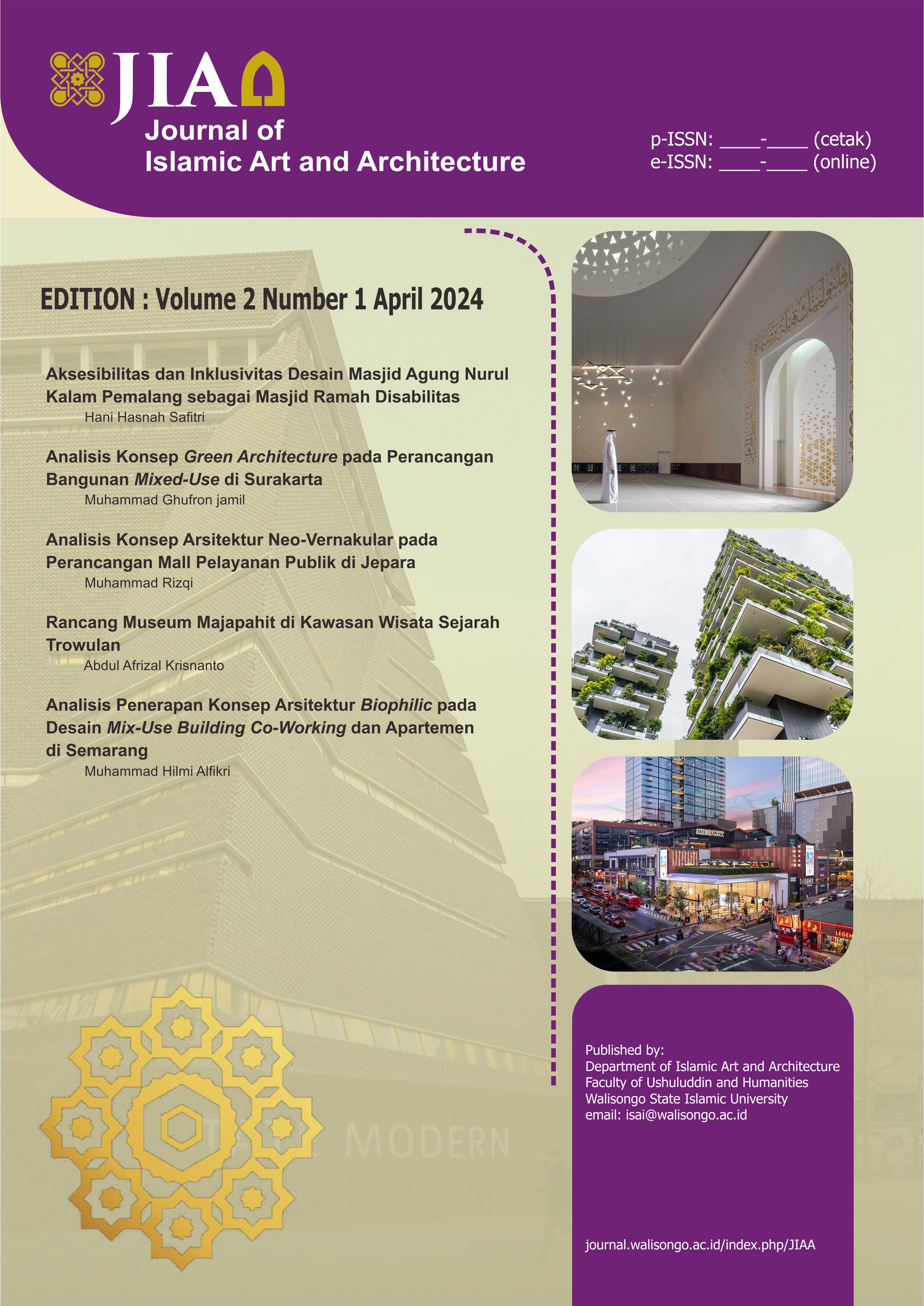ANALISIS KONSEP ARSITEKTUR NEO-VERNAKULAR PADA PERANCANGAN MALL PELAYANAN PUBLIK DI JEPARA
Keywords:
Neo-vernacular Architecture, Jepara Public Service Mall Building.Abstract
Neo-vernacular architecture is a movement that developed during postmodernism, an architectural movement that emerged in the mid-1960s. Postmodernism emerged in connection with the protest of modernist architects against monotonous models (block-shaped buildings), which were believed to have no character that could distinguish buildings from other buildings. The method used in this research is a qualitative method with descriptive analysis. In this case the application of neo-vernacular architecture in the construction of the Public Service Mall Building "MPP" in Jepara Regency is by applying the joglo roof of the Astana Sultan Mosque building which has a mixed architectural style of Hindhu-Buddhist, Javanese and Chinese cultures combined with motif ornaments from troso blangket batik which is also one of the characteristics of Jepara Regency itself. On the other hand, the main building of the Public Service Mall is inspired by the means of transportation "Ship" which describes most of the Jepara people as fishermen. The design of the Public Service Mall "MPP" in Jepara Regency through the Neo-vernacular Architecture approach aims to provide more optimal services for the community and is also expected to be used as one of the solutions to maintain and preserve local cultural patterns in an increasingly modern era in all aspects, especially in terms of infrastructure so as not to be eroded by the times and lost to oblivion in the futureDownloads
Downloads
Published
Issue
Section
License
Copyright (c) 2024 Journal of Islamic Art and Architecture (JIAA)

This work is licensed under a Creative Commons Attribution-ShareAlike 4.0 International License.
Copyright
The copyright of the received article shall be assigned to the journal as the publisher of the journal. The intended copyright includes the right to publish the article in various forms (including reprints). The journal maintains the publishing rights to the published articles. Therefore, the author must submit a statement of the Copyright Transfer Agreement.*)
Licensing

This work is licensed under a Creative Commons Attribution-ShareAlike 4.0 International License.
In line with the license, authors are allowed to share and adapt the material. In addition, the material must be given appropriate credit, provided with a link to the license, and indicated if changes were made. If authors remix, transform or build upon the material, authors must distribute their contributions under the same license as the original.
_______
*) Authors whose articles are accepted for publication will receive confirmation via email and send a Copyright Transfer Agreement.






